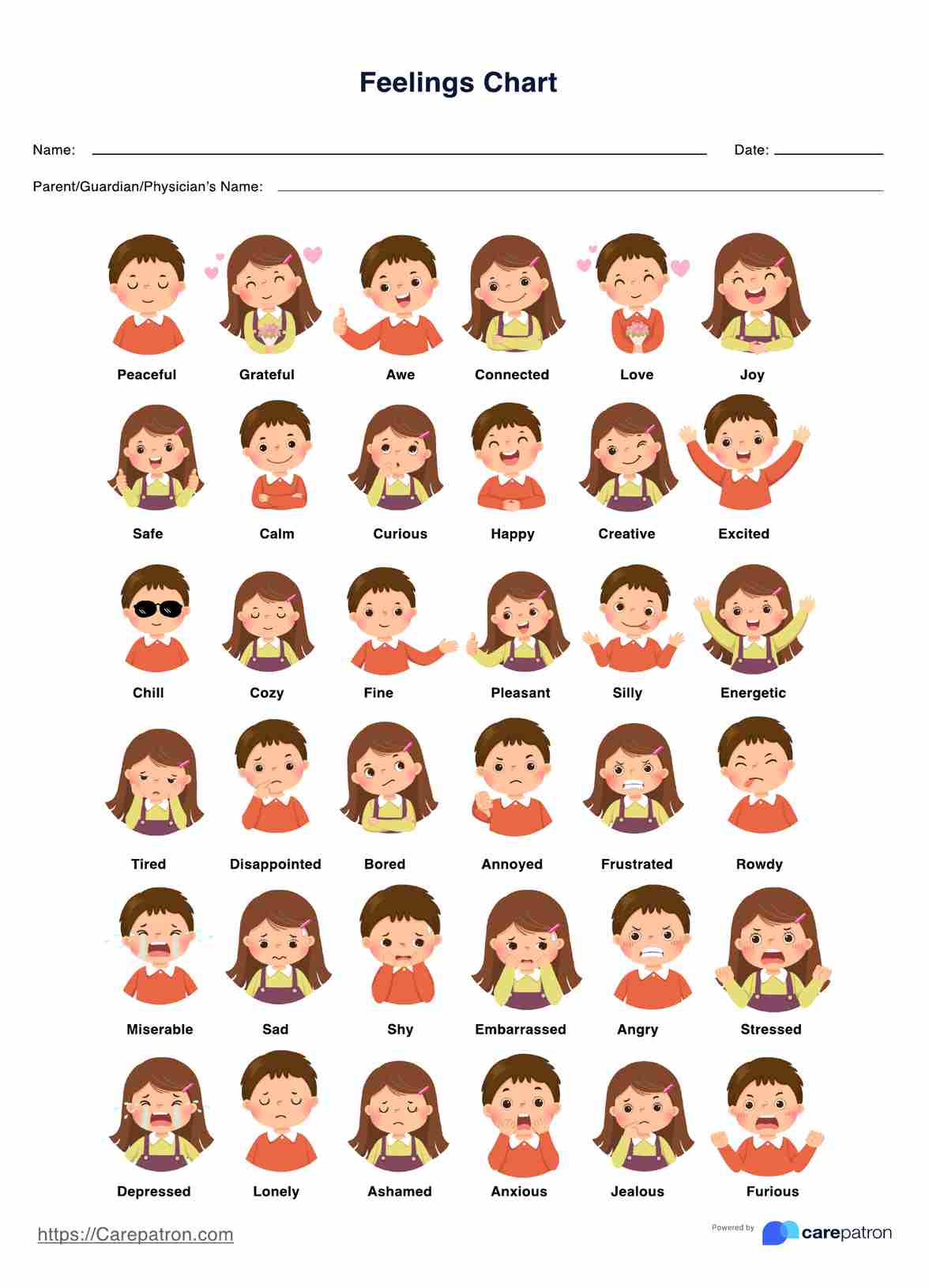To use a feelings chart with kids, start by introducing it as a simple, visual tool for naming emotions. Ask the child to look at the pictures and point to the face or word that matches how they feel, then encourage them to describe why. Over time, you can use the chart to help them notice patterns, connect feelings to experiences, and develop better emotional regulation skills.

Feelings Chart For Kids
Help children identify, name, and express emotions with our free customizable Feelings Chart for Kids, designed for home, school, or therapy use.
Feelings Chart For Kids Template
Commonly asked questions
Identifying feelings and emotions starts with paying attention to physical sensations, facial expressions, and thoughts that arise during different situations. For children, using visual supports like an emotions chart or feelings wheel can make this process easier by linking internal experiences with recognizable expressions. Encouraging kids to talk about or draw their emotions helps them gradually name and understand what they’re feeling.
According to research from the University of California, Berkeley, there are 27 distinct emotions, including admiration, adoration, aesthetic appreciation, amusement, anger, anxiety, awe, awkwardness, boredom, calmness, confusion, craving, disgust, empathic pain, entrancement, excitement, fear, horror, interest, joy, nostalgia, relief, romance, sadness, satisfaction, sexual desire, and surprise (Cowen & Keltner, 2017). These emotions exist on a broad spectrum, often blending and overlapping in real life. Helping children recognize that emotions can coexist—for example, feeling both excited and anxious—supports emotional awareness and resilience.
EHR and practice management software
Get started for free
*No credit card required
Free
$0/usd
Unlimited clients
Telehealth
1GB of storage
Client portal text
Automated billing and online payments











